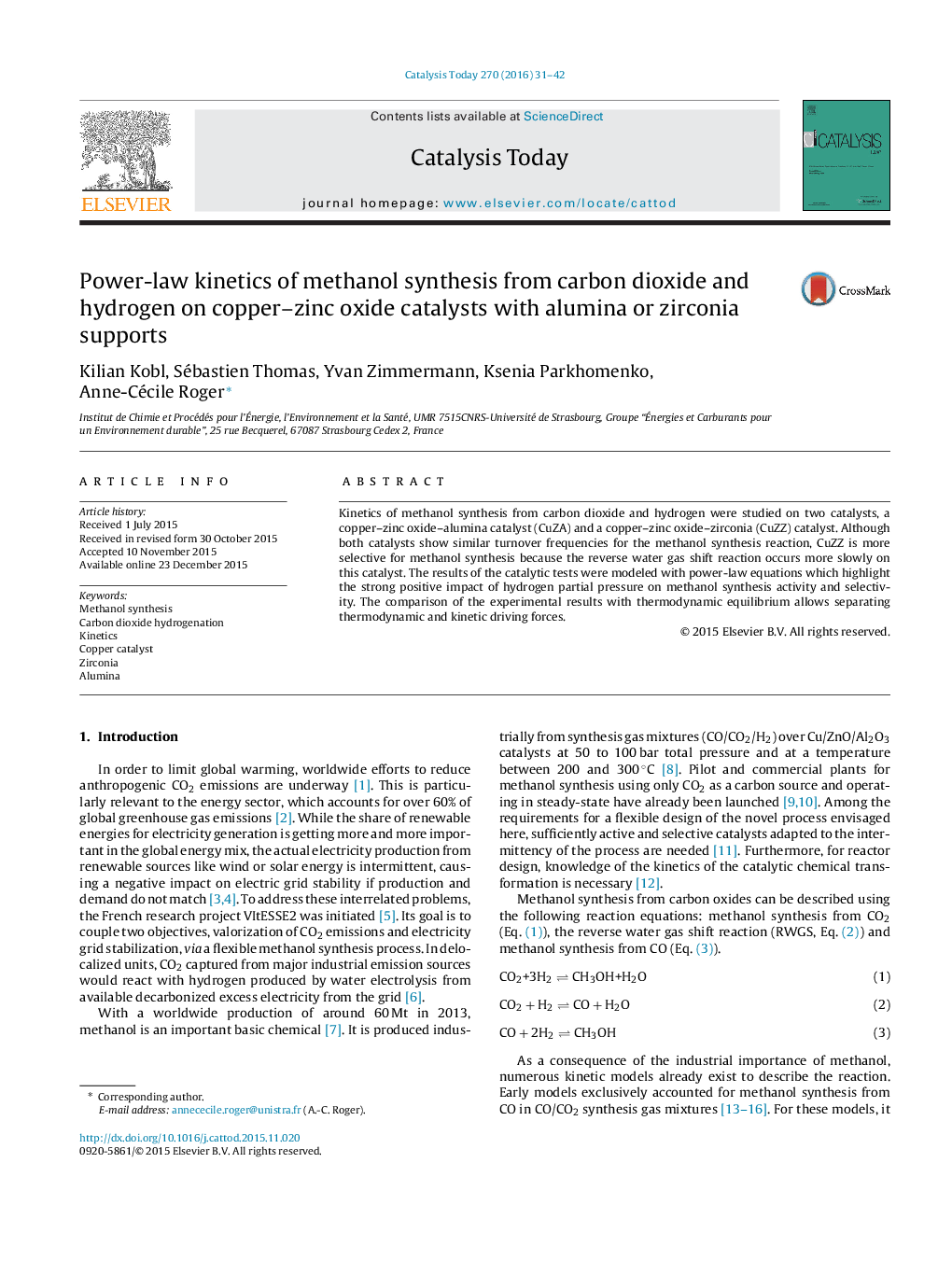| کد مقاله | کد نشریه | سال انتشار | مقاله انگلیسی | نسخه تمام متن |
|---|---|---|---|---|
| 53254 | 46957 | 2016 | 12 صفحه PDF | دانلود رایگان |
• Kinetics of two catalysts for methanol synthesis from CO2/H2 were assessed.
• Power-law models describe both methanol synthesis and reverse water gas shift reaction.
• Cu/ZnO/ZrO2 catalyst has better low temperature methanol selectivity than Cu/ZnO/Al2O3 catalyst.
• Overstoichiometric H2 in the feed strongly enhances methanol selectivity.
• 8-parameter models accurately fit the data with an average error below 10%.
Kinetics of methanol synthesis from carbon dioxide and hydrogen were studied on two catalysts, a copper–zinc oxide–alumina catalyst (CuZA) and a copper–zinc oxide–zirconia (CuZZ) catalyst. Although both catalysts show similar turnover frequencies for the methanol synthesis reaction, CuZZ is more selective for methanol synthesis because the reverse water gas shift reaction occurs more slowly on this catalyst. The results of the catalytic tests were modeled with power-law equations which highlight the strong positive impact of hydrogen partial pressure on methanol synthesis activity and selectivity. The comparison of the experimental results with thermodynamic equilibrium allows separating thermodynamic and kinetic driving forces.
Figure optionsDownload high-quality image (146 K)Download as PowerPoint slide
Journal: Catalysis Today - Volume 270, 15 July 2016, Pages 31–42
